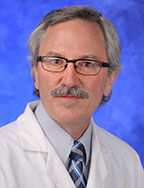Improving Quality of Care Using a Small Systems Approach
At tertiary hospitals around the world, a team-centered systems approach has evolved to help physicians provide more evidence-based care to improve patient outcomes. A major challenge toward implementing systems change is the sheer size and scope of any such organization.
Using a unique alternative approach, Penn State Hershey Obstetrics and Gynecology has begun two quality initiatives. The first places the power to define and enact systematic changes to care within each of its six smaller subdivisions (see Text Box for initiatives overview), led by Matthew F. Davies, M.D., FACOG, chief of female pelvic medicine and reconstructive surgery, and vice chair of quality and patient safety. A key feature of the program focuses on small teams as drivers of change. Dr. Davies states, “I’ve been impressed by how many great ideas for change have come out of the small group approach; with a few people acting as drivers, there is very little bureaucratic inertia and teams can make changes to patient care in a relatively short period of time.” Dr. Davies and each quality team member gathers patient outcomes data to evaluate the impact of each quality initiative. The teams also define precise timelines for examining the impact of process.
Dr. Davies explains the second program: “Within Penn State Hershey Obstetrics and Gynecology, we also hold weekly quality meetings, where 10-12 attendees usually focus on changes to system processes to improve outcomes and quality. Even a very small change in how a patient navigates through the care system can have a big impact on downstream outcomes.”
Dr. Davies cites some examples of these quality changes: “With high-volume, acute care situations, the achievement of urinary catheter removal goals can be evaluated in as little as six months. By contrast, the gynecologic oncology team, which is now testing for Lynch syndrome in all its patients, has lower case volumes and outcomes may be unclear for many months. To adequately evaluate the impact of lower case volume programs requires longer periods of time, such as two years. We’re also looking at new methods to gather outcomes data and how to look at it in more meaningful ways.”
The obstetrics and gynecology quality initiative is part of a system-wide quality program at Penn State Hershey Medical Center led by Andrew Resnick, M.D., chief quality officer, who oversees efforts to enhance quality, safety and value for activities related to clinical quality measurement and performance improvement.
Penn State Hershey Obstetrics and Gynecology Quality Improvement Initiatives
General Obstetrics and Gynecology: Compliance with initiatives to support breastfeeding
Gynecologic Oncology: Genetic testing for Lynch syndrome in all gynecologic oncology patients
Gynecologic Surgery: Assess hematocrit pre-operatively in all patients scheduled for hysterectomy
Maternal-Fetal Medicine: Errors in ultrasound reporting
Reproductive Endocrinology: Follow human chorionic gonadotropin (HCG) levels to 0 after ectopic pregnancy treatment
Urogynecology: Catheter removal less than or equal to 24 hours after insertion

Matthew F. Davies, M.D., FACOG
Chief, Female Pelvic Medicine and Reconstructive Surgery
Penn State Hershey Obstetrics and Gynecology
PHONE: 717-531-3503
EMAIL: mdavies@hmc.psu.edu
RESIDENCY & INTERNSHIP: OBGYN, Penn State Milton S. Hershey Medical
Center, Hershey, Pa.
MEDICAL SCHOOL: Penn State College of Medicine, Hershey, Pa.
Connect with Matthew Davies, M.D. on Doximity
